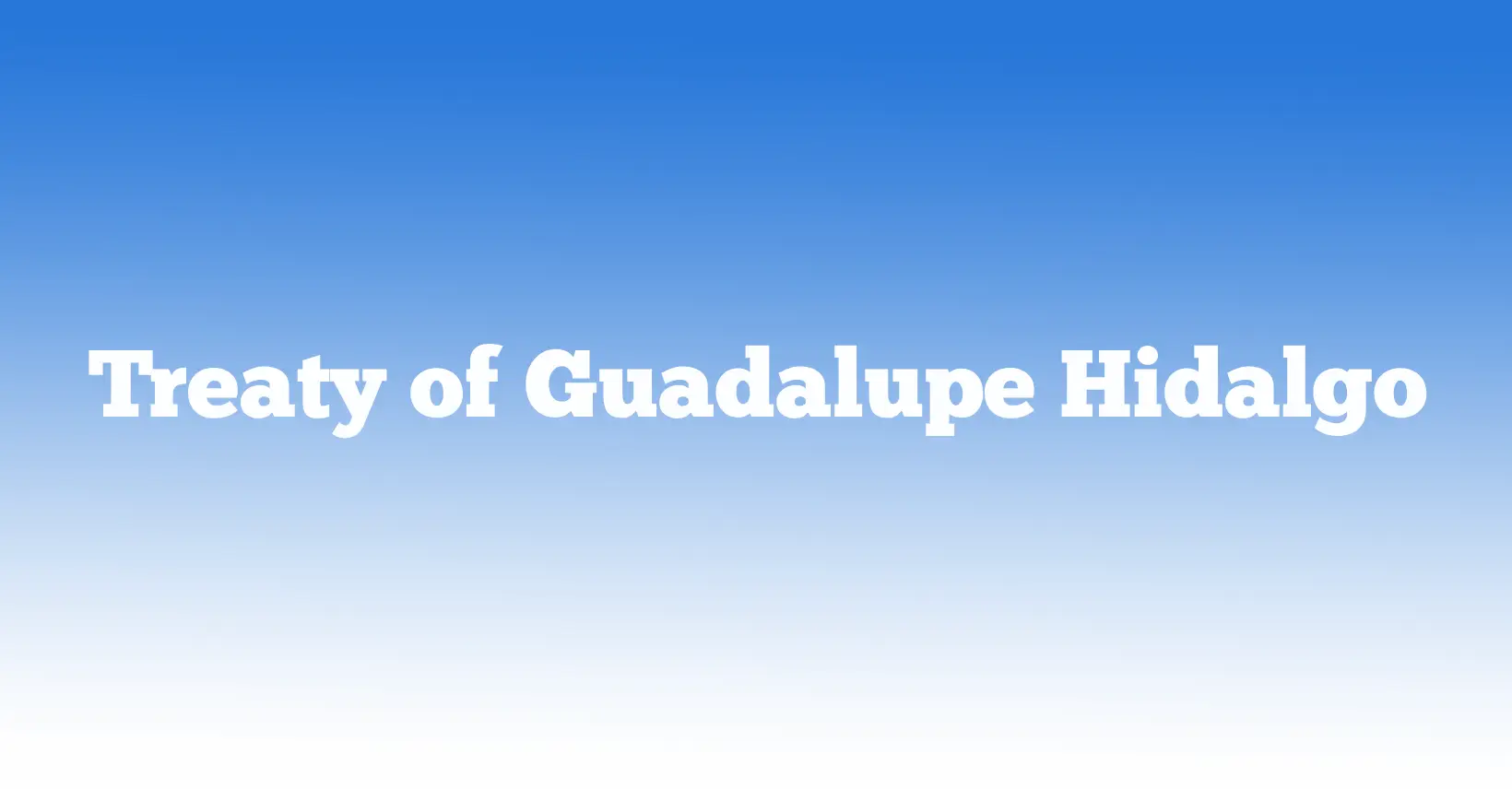Treaty of Guadalupe Hidalgo – February 02 2025
The Treaty of Guadalupe Hidalgo: A Pivotal Moment in American History
The Treaty of Guadalupe Hidalgo, officially known as the Treaty of Peace, Friendship, Limits, and Settlement between the United States of America and the Mexican Republic, was signed on February 2, 1848. This treaty marked a significant turning point in American history, as it officially ended the Mexican War (1846-1848) and set the stage for the future of U.S.-Mexico relations.

Historical Context: The Mexican-American War
The roots of the Treaty of Guadalupe Hidalgo lie in the complex relationship between the United States and Mexico. The U.S. declared war on Mexico on May 13, 1846, primarily due to a dispute over the territory of the Republic of Texas, which had won its independence from Mexico in 1836. Tensions escalated when President James Polk admitted Texas into the Union in 1845, leading to conflicting claims over borders.
American troops occupied lands between the Nueces River and the Rio Grande after Mexico refused to sell California and New Mexico to the United States. The situation further deteriorated when Texan troops crossed the Rio Grande, prompting President Polk to declare war, viewing it as an invasion of American soil. After nearly two years of conflict, the Mexican army was defeated, leading to the fall of Mexico City in September 1847.
[su_box title=”Treaty of Guadalupe Hidalgo – Next years” box_color=”#fb002a”]
- Sunday, 2 February 2025
- Monday, 02 February 2026
- Tuesday, 02 February 2027
- Wednesday, 02 February 2028
[/su_box]
The Signing of the Treaty
The Treaty of Guadalupe Hidalgo was signed at the town of Guadalupe Hidalgo, where the Mexican government had sought refuge with the help of U.S. forces. The treaty resulted in Mexico relinquishing approximately 55% of its territory, which included present-day California, Nevada, Utah, New Mexico, and parts of Arizona, Colorado, Oklahoma, Kansas, and Wyoming. Additionally, Mexico recognized the Rio Grande as the southern boundary of Texas.
Nicholas Trist, who was the chief clerk of the State Department, led the negotiations against President Polk’s wishes and was subsequently fired after the treaty was finalized. The U.S. Senate approved the treaty with a vote of 38-14, reflecting a divided opinion on the war and its consequences.
Implications of the Treaty
The Treaty of Guadalupe Hidalgo had profound implications for both nations. Mexico was compensated with $15 million, but the treaty also forced the country to relinquish its claims to Texas and recognize the Rio Grande as the southern boundary. This territorial expansion completed a significant phase of Manifest Destiny, which was the belief that the United States was destined to expand across the North American continent.
While Mexicans residing in the newly acquired territories were offered U.S. citizenship, the promises made to protect their rights were often unfulfilled. Many faced discrimination from American settlers, leading to decades of conflict and tension in these regions.
Moreover, the acquisition of new territory intensified debates over slavery in the United States. Abolitionists opposed the war, fearing that the expansion would lead to the spread of slavery. Although bills were introduced in Congress to prohibit slavery in the newly acquired territories, they ultimately failed to pass, contributing to the sectional tensions that would culminate in the Civil War (1861-1865).
The Treaty of Guadalupe Hidalgo remains a critical document in understanding the complex history between the United States and Mexico. It not only ended a significant conflict but also reshaped the territorial boundaries of both nations and ignited further debates over slavery that would have lasting effects on American society. The treaty’s legacy continues to influence U.S.-Mexico relations and the socio-political landscape of the American Southwest today.
By examining the Treaty of Guadalupe Hidalgo, we gain insight into the historical forces that shaped modern America and the ongoing impacts of territorial expansion.


